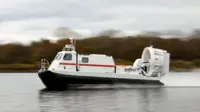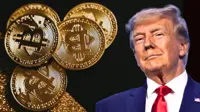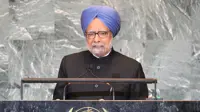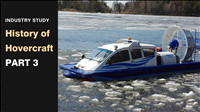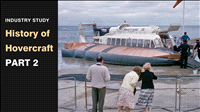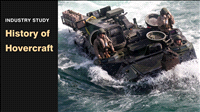China seeks compensation from Taiwan after navy ship collides with fishing trawler
By Cygnus | 04 Apr 2025

China has demanded compensation from Taiwan after a Taiwanese navy landing ship collided with a Chinese fishing trawler outside restricted waters last week. The incident occurred in the early hours of March 27, when the Taiwanese vessel, Chung Ho, struck the Chinese fishing boat Minlianyu 61756 about 45 nautical miles (83 km) off Taiwan’s Taichung port in the Taiwan Strait. Taiwan’s navy confirmed that the crash happened nine nautical miles outside restricted waters.
China’s Taiwan Affairs Office spokesperson, Zhu Fenglian, blamed Taiwan for the accident, stating that the Chinese trawler was anchored with its AIS signal and warning lights on, while the Taiwanese navy vessel did not have its AIS signal or warning lights activated. She accused Taiwan of evading responsibility and showing a bad attitude following the collision.
Taiwan’s navy acknowledged China’s demand for compensation but emphasized that an official investigation is still underway by Taiwan’s coast guard. In a brief response, Taiwan’s navy stated that “follow-up matters will be handled in accordance with the cross-strait consultation mechanism and relevant procedures” but did not provide further details.
The Taiwan Strait has long been a flashpoint in China-Taiwan relations. As one of the world’s busiest maritime routes, it is not only vital for international trade but also a strategic military zone. China views Taiwan as a breakaway province that it aims to reunify with the mainland—by force if necessary—while Taiwan insists on its sovereignty and democratic governance.
In recent years, China has significantly increased its naval presence in the Taiwan Strait, frequently sending warships, fighter jets, and surveillance aircraft near the island. Meanwhile, Taiwan has strengthened its own defense capabilities with support from allies like the United States, which maintains a policy of strategic ambiguity regarding military intervention in a potential conflict.
This latest collision between military and civilian vessels raises concerns about maritime safety in the region and whether such incidents could escalate into larger confrontations. While Taiwan and China have a consultation mechanism to handle maritime disputes, it remains uncertain whether this process will lead to an amicable resolution or further heighten tensions.
Adding to the complexity, China recently conducted two days of military drills near Taiwan, including long-range, live-fire exercises in the East China Sea. Beijing has justified these exercises as a direct response to the policies of Taiwan’s President-elect Lai Ching-te, whom it labels a separatist.
Lai, who won Taiwan’s 2024 presidential election, has long advocated for the island’s continued independence from Beijing’s rule. His victory signals that Taiwanese citizens largely reject China’s sovereignty claims, which has further angered Beijing. In response, China has vowed to intensify its military and diplomatic pressure on Taiwan, raising fears of more aggressive actions in the coming months.
At the same time, the United States and other Western allies have expressed concern over China’s actions, reaffirming their commitment to ensuring stability in the Taiwan Strait. The U.S. regularly sends warships through the strait as part of its freedom of navigation operations, a move that China strongly opposes.
This collision is not the first maritime dispute involving China. In recent years, Chinese fishing vessels and coast guard ships have been involved in similar incidents with Japan, the Philippines, and Vietnam in contested waters. Beijing claims large portions of the South China Sea and East China Sea, often leading to confrontations with neighboring countries over territorial rights, fishing zones, and naval activities.
Although Taiwan and China have avoided direct military conflict for decades, the growing number of naval and aerial encounters increases the risk of accidental clashes. Analysts warn that a miscalculation or unintended escalation could trigger a regional crisis that draws in major powers, including the U.S. and its Indo-Pacific allies.
Frequently Asked Questions (FAQs)
1.Where did the Taiwan-China ship collision occur?
The crash happened 45 nautical miles (83 km) off Taiwan’s Taichung port, nine nautical miles outside restricted waters.
2.Who is responsible for the collision?
China blames Taiwan’s navy vessel, alleging that it failed to activate AIS signals and warning lights. Taiwan’s coast guard is still investigating.
3.Why is the Taiwan Strait important?
It is a key global shipping route and a strategic military zone, with both China and Taiwan regularly conducting military drills.
4.How is China reacting to Taiwan’s new president-elect?
China has intensified military exercises around Taiwan, seeing Lai Ching-te’s leadership as a challenge to its territorial claims.
5.How could this maritime dispute affect global security?
With rising tensions between China and Taiwan, increased naval activities in the Taiwan Strait could lead to miscalculations or conflicts involving major powers like the U.S..
6.Has China been involved in similar maritime incidents before?
Yes, China has had maritime disputes with Japan, the Philippines, Vietnam, and other neighbors over territorial claims and naval operations.
7.What happens next in the Taiwan-China dispute?
Taiwan’s coast guard will conclude its investigation, after which cross-strait diplomatic discussions may take place—but tensions are likely to persist.







.webp)


